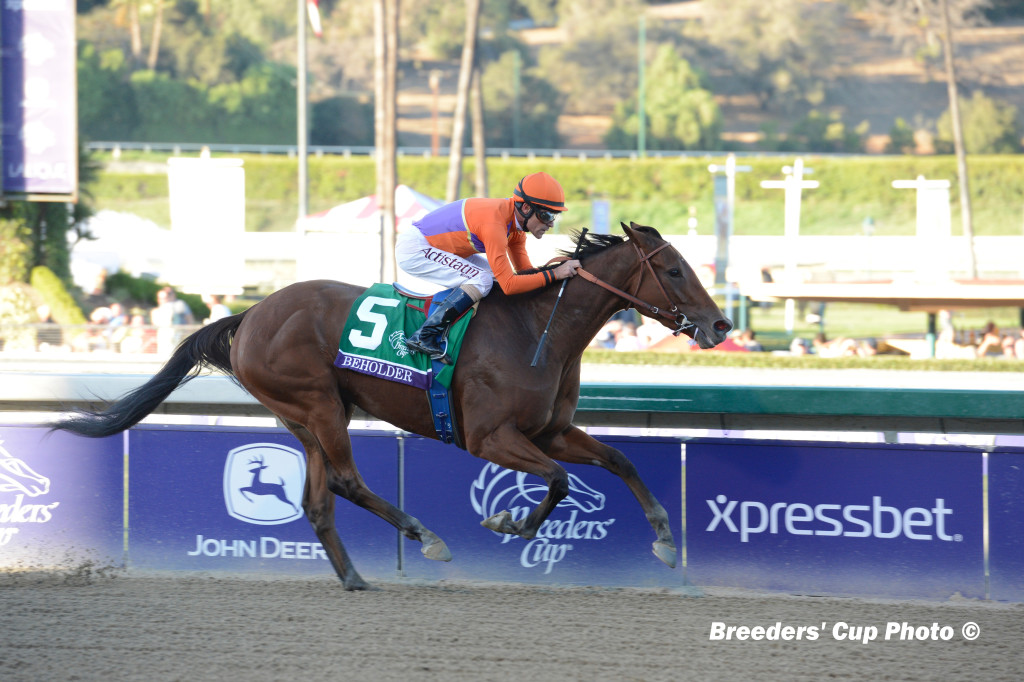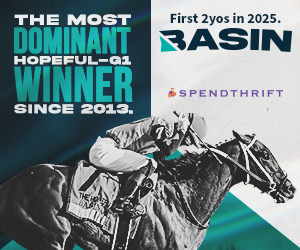
The serious horse player is faced with as many decisions as any business man you’ll find during a day at the office. Actually, I’d say more than most. Knowing when to zig instead of zag can be the difference not only between a profitable day or a losing one, but the difference between a life changing score or scraping up enough money for the next day’s past performances. Who to bet, how much to bet, when to bet, and how to bet are questions we have to answer repeatedly throughout the day. Even whether or not we should bet. It’s nearly impossible to explain to a non-race tracker, the ups and downs and rollercoaster effect a day at the races can have. Try explaining a bad trip, or bad steward’s decision, or losing a photo by a head bob that meant serious money to someone not in the game. They’ll never get it.
I’ve done columns in the past discussing different wagering strategies, and how to structure different types of wagers. Today I’ll discuss how to make some of the decisions mentioned above, and how to use those decisions to improve your game. To be clear, I play professionally, I play to win, and a lot depends on my success or failure. It’s not like that for everyone. So although my style is aggressive and designed to maximize that black column, even if you are a recreational player, or just an occasional turf speculating fan, these principles should help you improve.
When you are right you have to make it count.
We already know we’ll be wrong more than right. That tells us something I cannot stress enough. When you are right you have to make it count. Making it count involves many things, today we will talk about making right decisions. We’ll talk what to go after and when.
We have to adapt to the changes in the game. I used to be a big pick 6 player. It was my main wager and I was successful at it. Today I only focus on that wager on big carryover days, or on decent sized pool days without a carry over when there might not be as many sharks in the water. Even if you can keep up with the pools and syndicates, they will be reducing your payout. The pick 4, especially when it became a 50 cent wager and subsequently the pick 5 changed the pick 6 landscape.
Before the pick 4 went to 50 cents I switched to that wager for a while. I enjoyed a good run and made some nice hits. I had a disciplined system that worked well until the 50 cent implementation caused the payoffs to drop. I used to wager $1500 a day on nothing but the pick 4. The big stakes days were the only exceptions when I’d play more of the card. I’d figure out every horse I wanted to use in each race, if there was a single so be it. I’d then bet the $1500 into the pick 4. Sometimes I’d have it for $2 and sometimes for $50. Sometimes even more. It all depended how deep I was. If I got knocked out in an early leg, I waited for tomorrow. I stuck to one track. Once the bet changed to 50 cents I had to adapt again.
Today my wagers are more diversified. I still try to limit myself to one or maybe two tracks at the most. I also try to limit myself to classier races. I like investing in races where I know the Vets aren’t training the horses, they are well meant, and everyone is trying. There is never a shortcut to doing your homework and the past performances have no cliff notes. The first decision is what track are you going to focus on. Obviously this will change with the meets and seasons. You really do need to limit your focus if you are really doing your homework and trying to beat the game. Properly studying a card takes time, and if you don’t properly study the card, how will you make your next decision which is which race to bet?
Which races to go after is a crucial decision. Even the recreational player who wants to play every race can apply this principle. Just play proportionately to what you like. Not only don’t you not have to bet every race at every track, but you certainly don’t have to bet the same amounts. If you are not going to take my all in approach on the spots you like, and pass the others, at least adjust your investments where more of your bankroll goes towards the plays you really like and offer the most value.
Searching for value does not mean betting against who you think will win just to bet a horse with longer odds.
Searching for value does not mean betting against who you think will win just to bet a horse with longer odds. As I’ve said before there is no value in a losing bet. If you like a horse at big odds your wagering opportunities and decisions are plentiful and you can go in many directions. If you like a shorter price horse than your decisions are limited. There are obviously less ways to create value with a shorter priced horse, but make no mistake it can be done.
Most ADW’s and public handicappers, and even natural human instinct, draw us to multiple race wagers like pick 3’s and 4’s. There is nothing wrong with that and I play them myself regularly. What I don’t do that many do, is automatically look at that as my first option. I find often the double, exacta, triple, and superfecta frequently offer more value than pick 3’s and 4’s and get ignored by many players. The pools are often bigger and I suspect that has at least something to do with big bettors recognizing those opportunities.
If you like a horse that you’ll call a comfortable single, the first thing most people do is look to play it in a multi race sequence. Now you are pitting yourself against all the 50 cent players, and syndicates that spread and use many horses. You are also looking to beat multiple races as opposed to just one or maybe two. One of the worst beats at the races is when your single in a multi-race wager wins, and you don’t cash. Ask yourself do you really like and want to wager on all the races in the sequence? We all are familiar with that racing idiosyncrasy where you go 6 or 7 deep in a race in a multi-race wager and get beat. The logical explanation is you didn’t feel strong about the race and only played it because it was in the multi-race sequence.
Now back to our decisions. I like going after the singles. It makes all the sense in the world. My only suggestion is don’t make the multi-race play an automatic. Look at the exacta pools. See how many horses you think can be second. It may be only two or three, or even one. One horse keyed on top of three is a $3 wager. If you were planning to bet a 50 cent pick 4 investing $90 there is a good chance your $30 exacta could pay more and you only have to beat one race.
You can add the triple into the equation without a large increase to the investment. You just part wheel your key horse, with the horses you like for second and add the ones you think can run third or play it safe and go all in the third slot. The same applies to the super. Those of you who regularly read the column, follow me on Twitter, or catch me on Elite Racing Network or It’s Post Time, know I’m not a fan of the all button unless it is in the third or fourth slot of a triple or superfecta. Handicapping for third or fourth can be frustrating with riders easing up on horses they know won’t win. You also give yourself the opportunity to come up with some ridiculously long odds horse, which is easier to catch in the third or fourth slot than the win. Just the other day on Elite Racing Network I gave out a superfecta play, 1 x2 x all x all which came out to $14.40 for 10 cents. It paid considerably more than and for $14.40 a lot of players can have it a few or even many times.
Decisions, decisions, when to zig and when to zag. Only you can answer these questions but you should be looking at alternatives and where your best chances for value lie, where your top choices are, where the pools are healthy, and where you can avoid some of the sharks in the water. Just a week or two ago everyone was focused on a huge Santa Anita pick 6 carry over, and the Gulfstream Rainbow Jackpot pick 6 flew under the radar, was nailed, and paid way more than Santa Anita. I love the jackpot bets. There is often more value there even when sharing a percentage of the pool with other winners, and you can buy a lot of coverage and compete with the pools and syndicates.
A single will provide you the opportunity to take some say $10 or $25 doubles depending on your budget.
The double also gets ignored a lot, especially the rolling ones that lead into a pick 3, 4, 5, or 6. There is often value to be found there and you only have to beat two races not say 4. A single will provide you the opportunity to take some say $10 or $25 doubles depending on your budget. At times you can invest the whole bankroll and maybe take a $100 or $200 double. Trust me it feels as good as a 50 cent pick 4 even though the game seems to try and steer us to the multi-race bets. You have options. I suggest you explore them.
As always I welcome discussion on these practices and feel free to bring them up here, on Elite Racing Network, It’s Post Time, Twitter, Facebook, or wherever you are comfortable. Although in the end we are playing against each other, sharing information and learning from each other helps make this game great. In the end we’ll all have our own opinions and methods so no harm no foul. Ask away.
High Five
The high five this week goes out to Carlo Vaccarezza. Carlo now as a trainer took down the late double at Gulfstream with Little Balter at $79.60 and Little Big Girl at $75.20. The double paid $2562 for $2. Ah salut to Carlo and his crew. I’m sure Frank and Dino’s was in joyous spirits. Carlo deserves a lot of credit. He went from fan, to bettor, to owner, to breeder, to running a partnership, and now a trainer with success at every level including picking out and owning champion Little Mike. Little Mike was all heart. Carlo offers reasonable and straight forward partnerships at Little Dreams Racing and can be reached at Littledreams11@aol.com.
Low Five
Gem in the last at Gulfstream, Ouch if you needed Gem. Carlo you had a little help in that last one I think but you got the money. Just watch the replay.




